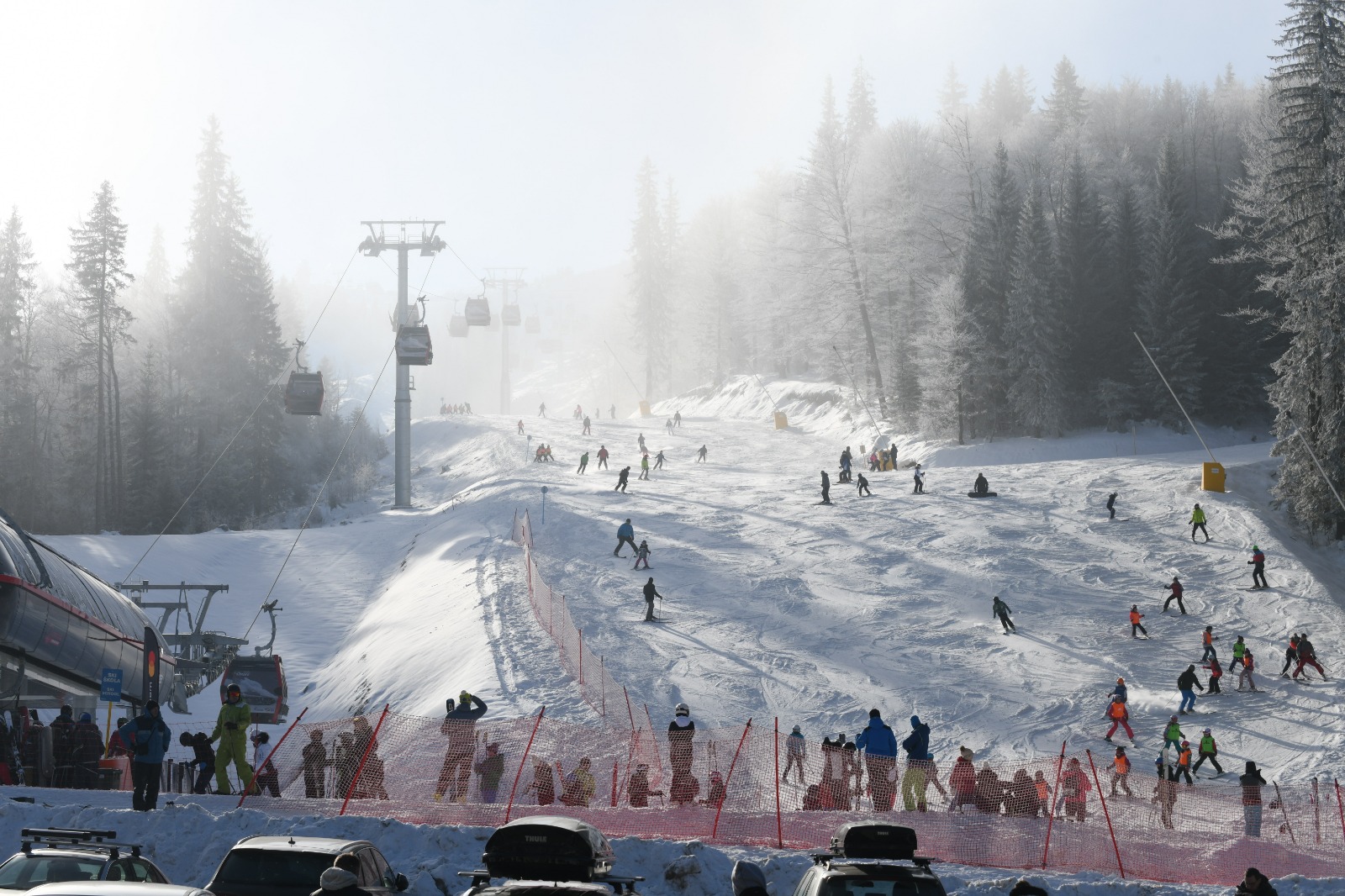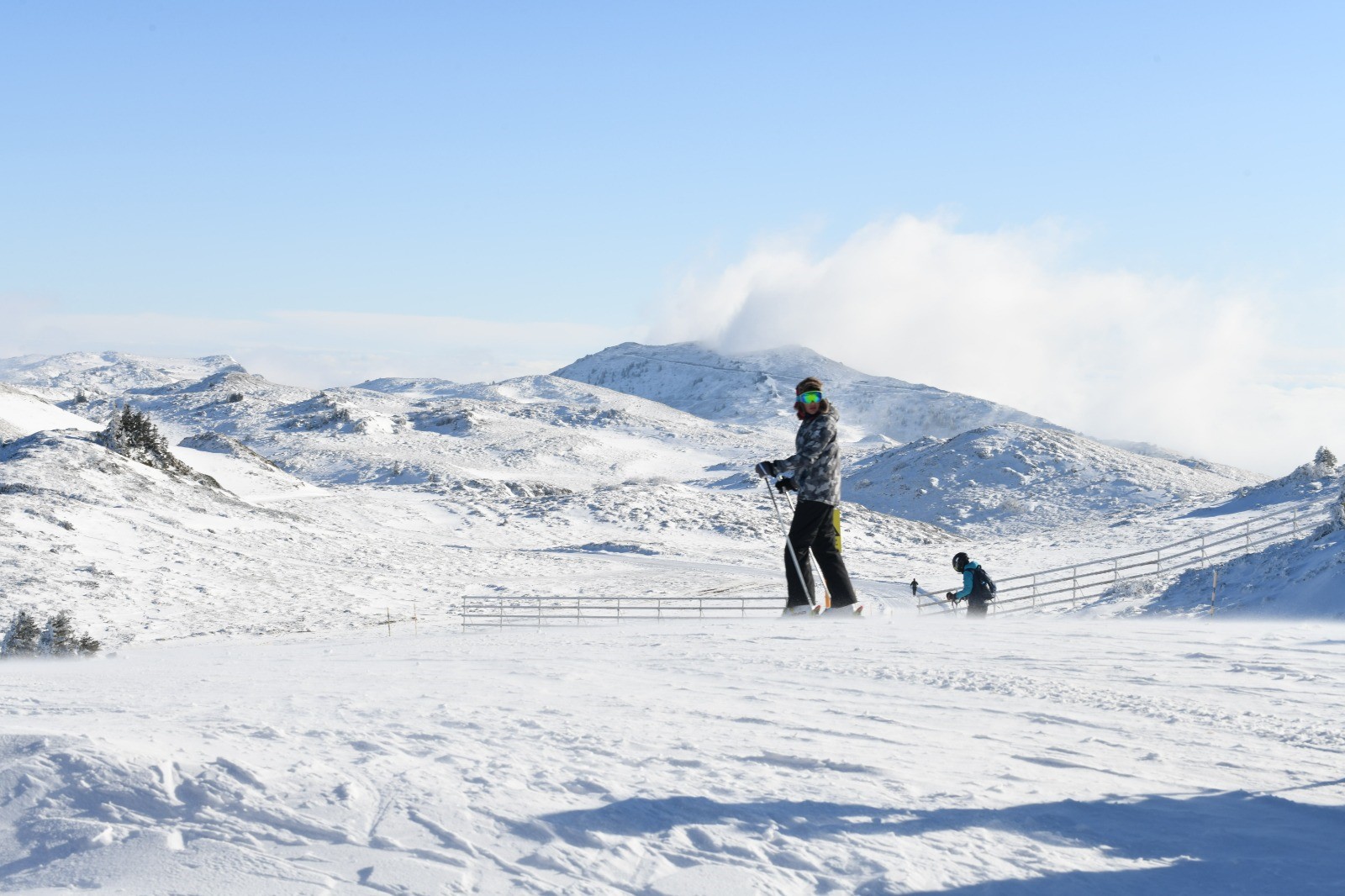Januar 2020
January 13, 2020
January Discount Shower
January 17, 2020Prior to skiing start, it is necessary to pay at least one month attention to physical preparation, since skiing requires atypical (unusual) movements whereby the tendons, joints and muscles suffer unusual and asymmetric loads. Especially for recreationalists who have not fully adopted the advanced skiing technique and have an incorrect skiing posture.
Skiing is also done in an unusual setting: thin air, cold, wind… etc. all of which require adequate psychophysical preparation. Long tours (minimum 6 km) of brisk walking or light running daily, shaping and stretching exercises twice a day are recommended – especially to avoid stretching the leg muscles and tendons of the knee and hip joints. Be sure to do deep squats with and without jumps, exercises for the abdominal and back muscles, especially the lumbar belt and the spine. The greatest load is on the anterior muscles of the hamstring (quadriceps), buttocks (gluteus), abdomen and back, and these muscle groups should be prioritized with exercise. This applies and it is mandatory for those who know how to ski as well as for those who are preparing to start skiing, as a form of prevention of possible injuries and fatigue.
Proper selection of equipment is also very important for safe and relaxed skiing and therefore enjoyment of skiing.
Choice of skis – Each ski manufacturer has ski classes / models that are clearly defined according to the level of user skiing technique or function expected of these models. Rental, recreational, for all terrains, for top skiers, competitive…. and when buying or renting you should choose a class / model that matches the skiers’ real technical knowledge, otherwise an inadequate model will not be able to provide the required effect and will make skiing difficult. For example, a beginner or intermediate skier should by no means drive models declared for top skiers or competitors. Simply, these skis are too tight, and such a skier will not be able to bend them enough to realize the side arch effect and the resilient elasticity (sling effect) that helps and facilitates turning. With adequate skiing, skiing is easy and safe because it can be controlled without tiring the legs and providing the right fit for the intended person. You should ask the seller or servicer and certainly the ski instructor for advice, and the information which ski model is for what and for what level of skier is intended can be found in the manufacturer’s catalogs and on the manufacturer’s website.
Ski maintenance is also extremely important for safe and relaxed skiing, and for those with no knowledge and maintenance equipment, it is advised to take your skis to one of the authorized service centers after each skiing and have a full service of the skis. The bindings should be loosened and the metal parts of the bindings corrosion protected.
Choice of Boots -ski boots also have a global classification for strength / hardness, that is, the ability to tilt / flex under the weight of a skier’s body. This feature is called FLEX I and is clearly marked on each boot. The bigger the FLEX, the heavier the boot and the softer the smaller. They are most strongly intended for competitors and least for beginners. The boot should not be too wide but not too narrow and must firmly cover the lower leg and the foot without the slightest biting. When the boot closes / locks, the heel should be allowed to move inside the boot minimum, but the foot should not have room to move left and right inside the boot. Choosing the right boots is extremely important both for safety and comfort, as well as for the efficient transfer of the skier’s movements to the skis. After skiing is completed (every day), the boots should be fastened and put to dry or on dryers or heaters or on a radiator or some heater. Do not go skiing with a wet and cold boots. It is not advisable to use someone else’s boots or give them to others.
Important tip – a skier should not put anything from his/her clothes inside the boots. Only a cotton skiing sock, not synthetic ones. Otherwise, serious scratching and wounds can be made which will make skiing completely impossible !!
Poles -Ski poles should be of the appropriate length, which is easy to choose. The pole is turned upside down, the handle rests on the ground and the fist is gripped under the rag. If the angle of the upper arm and forearm is 90 ° then this is the appropriate length. There are rods for different purposes and from different materials, so it is best to ask the seller, instructor or repairer for advice.
Clothing – Skiing conditions can be extreme. The skier is exposed to humidity, wind, cold, sun, heat, and the clothing he wears must be of a suitable material that is waterproof, vapor-permeable, firmly slip-resistant, tear-free and scratch-resistant, warm and flexible (to allow the skier to move freely ). When choosing, the skier must check the manufacturer’s guarantees that the clothing has all of the following characteristics. Waterproofing is expressed in PSI units and quality departments have 20,000 units and upwards. One of the highest quality materials is GOROTEX. Make sure that the garment has enough pockets for specific skiing needs, such as a pocket for a ski pass, a mobile phone, glasses, a cap, etc.… The principle is multi-layer dressing – cotton underwear, wool, vest, fleece, soft shell, jacket, pants.
Helmet – It is recommended that you wear a protective ski helmet for your personal safety. More expensive helmets are usually of higher quality and the choice is predominantly defined by the possibility of buying more expensive or cheaper or it is a matter of taste.
Googles – For the protection of the eyes, but also for safe skiing, a necessary part of the equipment of the skiers are googles, which should not mist, should have protection from UV radiation and allow clear visibility, even in the conditions of snowy clouds and cloudiness – reduced visibility.
Mask – For extremely cold or windy days, it is recommended to use a (neoprene) face mask that protects the face skin from frost and provides skiing comfort even under such conditions.
Gloves – waterproof, warm, tear resistant. If leather, they require, after each day of skiing, a maintenance cream after drying.
At the beginning of the season but also every day of skiing, it is best to start with the easier trails and gradually move on to the harder ones as we warm up. The best time of day to enjoy skiing is in the morning from the opening of the ski slopes as the trails are well maintained and there is not much traffic. Also after 1pm when the ski resort slowly empties as many take breaks or lodging. And of course if the ski resort has a night trail it should be used, because then the trail is freshly prepared and there are practically no crowds.


